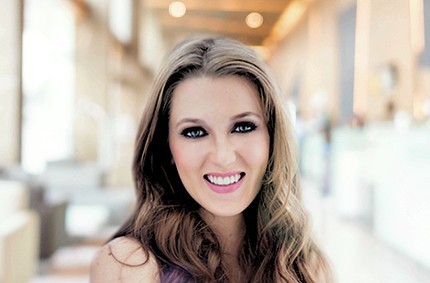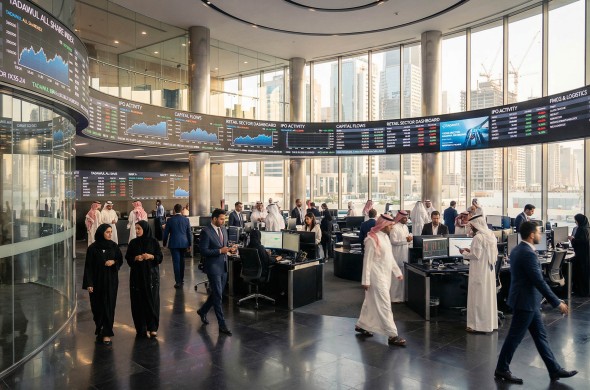If you ever walked into a store after looking in the window, then you know how powerful visual merchandising can be. It’s what piqued your interest and made you want to go inside.
What’s more, once you went inside, your experience determined whether you made a purchase or left empty handed. Regardless of which action you took, how the store was set up, as well as how it was displayed played a huge role.
Even though online shopping is booming in many parts of the world, some countries, like Saudi Arabia and UAE, still have a high percentage of foot traffic to physical locations.
And since retail sales are expected to increase in both countries, it’s important to create the ultimate shopping experience.
What’s that mean for retailers? Simply put, the need for on-point visual merchandising has never been greater.
What is Visual Merchandising?
At its core, visual merchandising is a form of marketing. Using strategically placed lights, color palettes, product hierarchy and technology, it’s meant to entice consumers to buy.
Visual merchandisers are the people behind the marketing magic. In addition to following consumer trends, they use color and light theories to create displays in specific areas, including end-of-aisle point-of-sale (at checkout) and in the windows.
As a consumer, most people aren’t aware that even the way products are positioned in the store are done with purpose.
5 Key Elements of Visual Merchandising
Visual merchandising is what brings consumers into your establishment. It’s what makes them want to know more about you when they see an interesting window display. So, when it comes to effective visual merchandising, there are 5 key elements to consider.
Color: Colors are meant to stir emotion; create a specific feeling that encourages purchase. You should choose a color palette that aligns with your brand’s image.
Landscape: The layout of your store determines how customers move, what they see and where they spend most of their time.
The landscape should create intrigue. It has three dimensions, all of which work in harmony and provide movement, depth and product flow. When implemented properly, your product offerings will encourage customers to make a purchase.
In general, landscapes are symmetrical or asymmetrical. Symmetrical designs draw the eye into the display. It encourages them to browse all the options.
Contrary to flat displays, which make customers skim over products, symmetrical landscapes encourage customers to shop your entire product offering.
Texture: Think of texture as the touch and feel part of visual merchandising. Using different textures will impact how your customers feel. Smooth surfaces that illuminate with light bring about a feeling of joy while rougher textures create a cozier feel. The materials used will depend on the type of products you offer.
Communication: Signage needs to communicate your message. At the very least, it should indicate what the product is and its price. When it comes to signage, research shows that you have approximately 5 seconds to capture your customers’ attention.
Decor: Decor is like the icing on the cake. It should capture a customer’s attention and make them want to browse the display.
Examples of Visual Merchandising
There are several types of visual merchandising strategies retailers can use to increase foot traffic.
Eye Level Equals Buy Level
Product placement should be broken down into 4. These include the following levels:
- Stretch
- Eye
- Touch
- Stoop
Stretch level: The most expensive products should be placed on the top shelf. In actuality, levels placed on the top shelf usually receive the least attention.
Eye Level: If staged properly eye level can equal buy level. Products placed at eye level receive 35% more attention than ones placed above and below. This is the best level for products with profit margins.
Touch Level: There’s a reason why retail consultants recommend putting kid-friendly products at the touch level. At this level, children are more likely to see them and ask their parents to buy them.
Stoop Level: Products placed at the lowest level typically also have the lowest profit margin. Since they don’t sell as much as others, retailers consider them as spacers, not money makers.
Techniques
Visual merchandising needs to speak to your customers. And while perfecting a display might seem daunting, there are 7 ways to make it happen.
- Mixed Promotion: You should also create a hierarchy of different products that consumers buy separately. When combined in the same space, they’re more likely to buy than if spaced out in other areas. If used in a separate display, choose products that complement each other.
- Cross Selling: Not to be confused with mixed promotion, cross selling is similar to upselling. Group products that are typically used together. For example, someone looking for eye shadow would also buy make-up remover. Placing them together encourages customers to buy both.
- Create POS displays: Approximately 40% to 80% of sales are impulse buys. Creating point-of-sales displays that are exciting will guide customers one step further along their buyer’s journey. Use sales data to determine the top selling products and then stage them throughout the store and at checkout.
- Create Focal Points: Focal points are displays that house top-selling products. They’re easy to see and inviting. Stage these in areas that lead to the final checkout.
- Lighting: Choose lighting to create ambiance. It should match your brand and illuminate your entire space.
- Technology: QR codes, interactive videos and mobile integration can enhance the shopping experience and encourage purchasing action.
Scannable QR codes at displays offer additional information, whereas interactive videos can allow for try-on sessions.There are two types of mobile integration: customer-facing and merchandiser-facing.
Customer-facing integration can push notifications to smartphones for in-store promotions. Merchandiser-facing integration allows you to track data and perform sales analysis.
- Tell your story: Consumers want to know your story. They want to connect with you. Create a narrative that tells your brand’s story within your visual merchandising efforts. You can use music, color, and lighting to set the mood. Customers will leave feeling like they lived your narrative.
Benefits of Visual Merchandising
All types of stores can benefit from strategic visual merchandising. In addition to reaching quarterly benchmarks, there’s other key benefits as well:
- Brand awareness
- Increased engagement
- Sales growth
When visual merchandising is done correctly, it resonates with your brand. Consumers automatically identify the layout and product offerings as yours.
Good visual merchandising also boosts customer engagement. People are more likely to remember specific elements of the displays. In turn, they may relay positive feedback to sales members and friends and family. Simply put, visual merchandising can boost your ROI and market share.
It’s important to note that visual merchandising can be expensive. In addition, you may need to hire additional staff; people who are experts and can create displays that increase sales and provide value.
Retail Consulting Services
Visual merchandising requires a strategy. If you’re not familiar with the process, reach out to Ollen Group experienced retail consultants.
Ollen Group is one of the leading retail consulting firms in the Middle East & Africa region (MEA) offering retail design services with turnkey solutions from strategy to execution. Our retail strategy consultant will help your through your journey.
Read our latest insights, ideas, and perspectives that explore the trends shaping the future of business and society. Our consultancy services go hand-in-hand with these insights, confirming our position as industry leaders. Get in touch to find out more about our consulting services and industry expertise.



